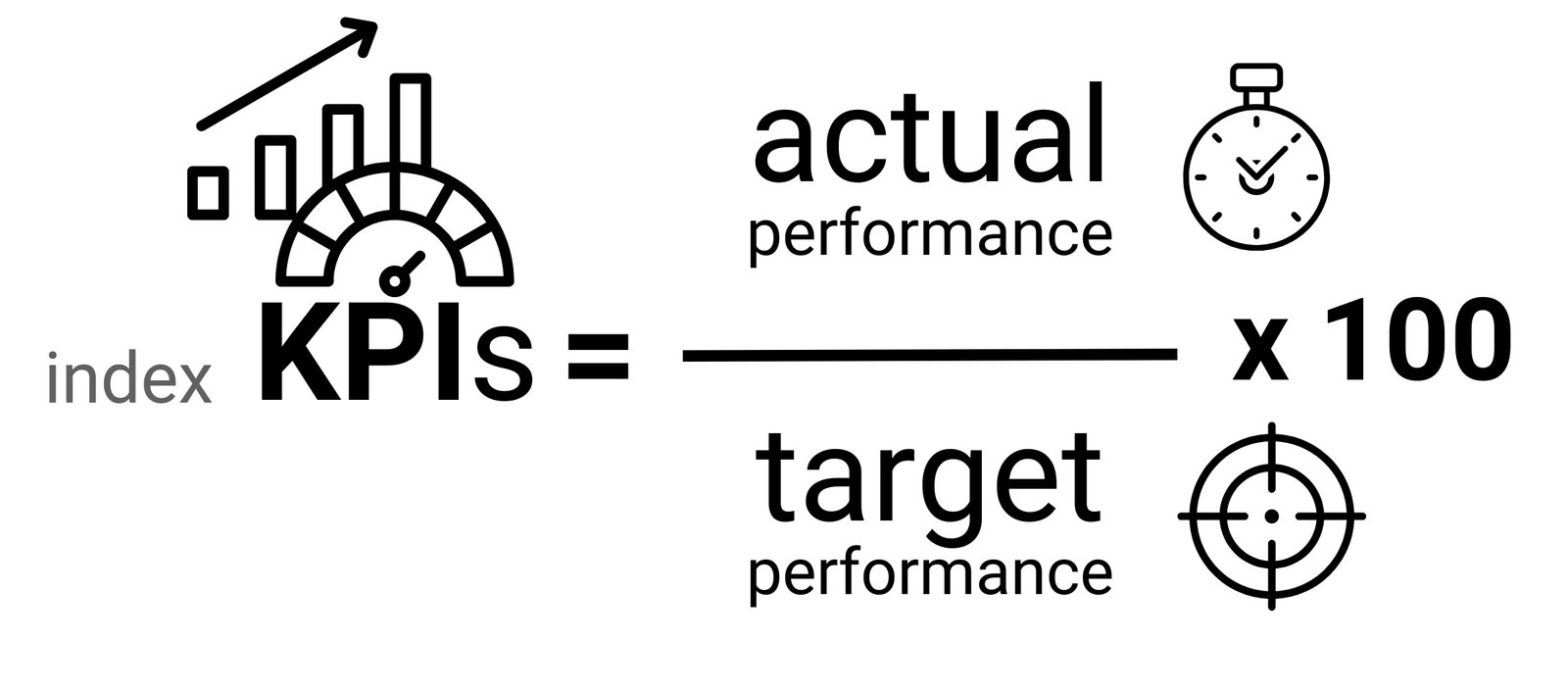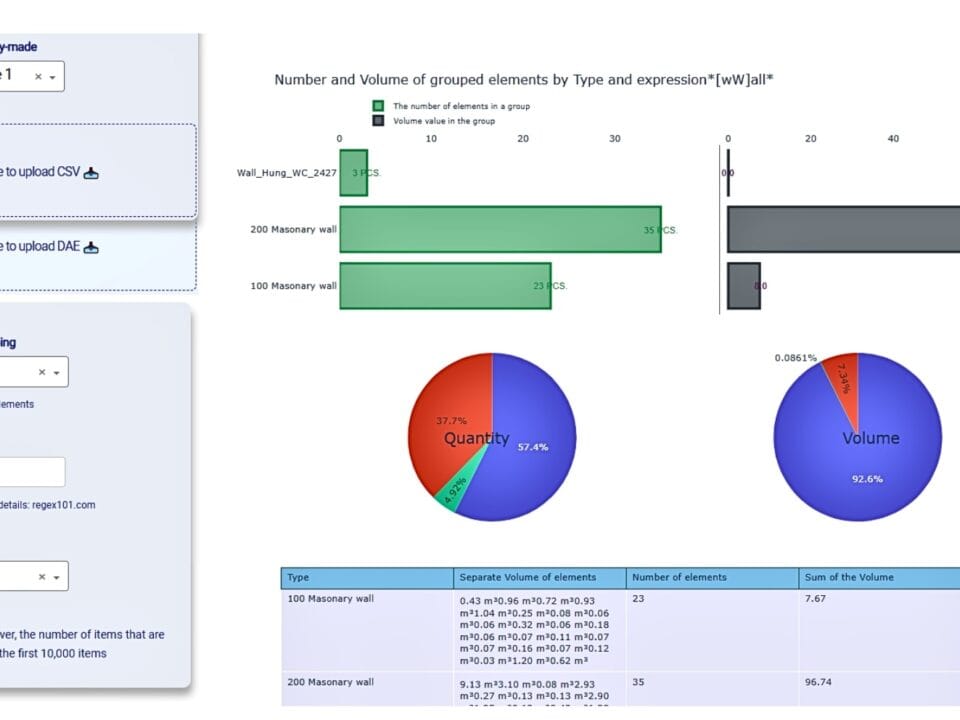In today’s construction industry, the management of performance indicators (KPI and ROI) and their visualization through reports and dashboards play a key role in improving productivity and project management efficiency.
As in any business, in construction, it is necessary to clearly define the metrics by which success, return on investment and performance are measured. When obtaining data on various processes, a data-driven organization must first learn to identify key KPIs (Key Performance Indicators) – quantitative measures that reflect the extent to which strategic and operational goals are being achieved.
To calculate a KPI, a formula is usually used (Fig. 7.1-5) that includes actual and planned indicators. For example, to calculate an individual KPI for a project, employee or process, divide the actual performance by the planned performance and multiply the result by 100%.

At the construction site level, more detailed KPI metrics can be used:
- Timing of key milestones (foundation, installation, finishing) – allows you to monitor compliance with work plans.
- Material Overrun Percentage – helps to manage purchases and minimize wastage.
- Number of unscheduled machine downtimes – affects productivity and costs.
Choosing the wrong metrics can lead to erroneous “what to do?” decisions (Fig. 2.2-5). For example, if a company focuses only on cost per square meter but does not consider the cost of remodeling, savings on materials can lead to poorer quality and higher costs in future projects.
When setting objectives, it is important to be clear about what is being measured. Vague wording leads to incorrect conclusions and complicates control. Let’s look at examples of successful and unsuccessful KPIs in construction.
Good KPIs:
“By the end of the year, reduce the percentage of reworked finishes by 10%.”
“Increase the speed of façade installation by 15% without compromising quality by next quarter”
“Reduce equipment downtime by 20% by optimizing work schedules by year-end”
These metrics are clearly measurable, have specific values and timeframes.
Bad KPIs:
“We will build faster” (How much faster? What does “faster” mean?)
“We will improve the quality of concrete work” (How exactly is quality measured?)
“We will improve contractor interaction at the site” (What criteria will show improvement?)
A good KPI is one that can be measured and objectively assessed. In construction, this is especially important, because without clear indicators it is impossible to monitor performance and achieve stable results.
In addition to KPI, there is an additional metric for assessing the effectiveness of investments: ROI (Return on Investment) – a return on investment indicator that reflects the ratio between profit and invested funds. ROI allows you to assess whether the implementation of new methods, technologies or tools is justified: from digital solutions and automation (e.g. Fig. 7.3-2) to the use of new building materials. This indicator helps to make informed decisions about further investments based on their real impact on business profitability
In the context of construction project management, ROI (return on investment) can be used as one of the key performance indicators (KPI) if a company’s goal is to measure the return on investment of a project, technology or process improvement. For example, if a new construction management technique is being implemented, ROI can show how much it has improved profitability.
Regularly measuring KPIs and ROIs based on data collected from various sources, such as material consumption, labor hours and costs, allows project management to effectively manage resources and make quick decisions. Storing this data for the long term allows for analyzing future trends and optimizing processes.
Various charts and graphs are used to visualize KPIs, ROIs, and other metrics and are usually combined into dashboards.






















